- Home
- James Rollins
The Devil Colony Page 3
The Devil Colony Read online
Page 3
Light grew brighter behind him, bathing the chamber.
Now able to see, he rushed headlong across the cavern. As he reached the mouth of the tunnel, a thudding, tumbling sounded behind him. He glanced over his shoulder.
A body came rolling out of the passageway and sprawled facedown on the floor. The growing light revealed the embroidered feathers on the back of the body’s crimson jacket.
Charlie.
With a fist clamped to his lips, Trent fled into the sheltering darkness of the tunnel. Fear grew sharper with every step.
Do they know I’m down here, too?
The tunnel ran flat and smooth, but it was far too short. After only five scared steps, it widened into another chamber.
Trent ducked to the side and flattened against the wall. He fought to control his ragged breathing, sure it would be heard all the way outside. He risked a peek back.
Someone had entered the mummy chamber with a flashlight. In the jumbling light, the shape bent down and dragged his friend’s body to the edge of the fire pit. It was only one person. The murderer dropped to his knees, set down his flashlight, and pulled Charlie’s body to his chest. The man raised his face to the roof and rocked, chanting something in the Ute language.
Trent bit off a gasp, recognizing that lined and leathery face.
As he watched, Charlie’s grandfather raised a polished steel pistol to his own head. Trent turned away but was too slow. The blast deafened in the confined space. Half of the old man’s skull exploded in a spray of blood, bone, and gore.
The pistol clattered to the stone. The old man fell heavily over his grandson’s body, as if protecting him in death. A slack arm struck the abandoned flashlight, nudging it enough to shine directly at Trent’s hiding place.
He slumped to his knees in horror, remembering the superstitious warning from Charlie’s grandfather: Whoever trespasses into the Great Spirit’s cave is never allowed to leave.
The tribal elder had certainly made that come true for Charlie. He must have somehow learned about the theft of the map and tracked them here.
Trent covered his face with his palms, breathing hard between his fingers, refusing to believe what he had witnessed. He listened for anyone else out there. But only silence answered him. He waited a full ten minutes.
Finally satisfied that he was alone, he pushed back to his feet. He looked over his shoulder. The flashlight’s beam pierced to the back of the small cave, revealing what had been hidden here long ago.
Stone crates, each the size of a lunch box, were stacked at the back of the chamber. They appeared to be oiled and wrapped in bark. But what drew Trent’s full attention rose in the center of the room.
A massive skull rested atop a granite plinth.
A totem, he thought.
Trent stared into those empty sockets, noting the high domed cranium and the unnaturally long fangs. Each had to be a foot long. He had learned enough from his old earth sciences classes to recognize the skull of a saber-toothed tiger.
Still, he couldn’t help but be stunned by the strange state of the skull. He had to tell someone about the murder, the suicide—but also about this treasure.
A treasure that made no sense.
He hurried headlong down the tunnel, passed through the mummy chamber, and ran toward daylight. At the entrance to the cave, he paused, remembering the final warning from Charlie’s grandfather, about what would happen if someone trespassed here and left.
The world will come to an end.
Teary-eyed, Trent shook his head. Superstitions had killed his best friend. He wasn’t about to let the same happen to him.
With a leap, he fled back into the world.
Chapter 2
May 30, 10:38 A.M.
High Uintas Wilderness
Utah
Nothing like murder to draw a circus.
Margaret Grantham crossed the makeshift camp set up in a high meadow overlooking the ravine. She huffed a bit in the thin air, and the arthritis in her knuckles still throbbed from the cold. A gust of wind threatened to rip the hat from her head, but she held it in place, tucking away a few strands of gray hair.
All around, tents sprawled across several acres, broken up into various factions, from law enforcement to local media. A National Guard unit stood by to keep the peace, but even its presence only added to the tension.
Native American groups from across the country had been gathering steadily over the past two weeks, drawn to the remote location by the controversy, hiking or riding in on horseback. They came under the auspices of several different acronyms: NABO, AUNU, NAG, NCAI. But ultimately all the letters served one purpose: to protect Native American rights and to preserve tribal heritage. Several of the tents were tepees, constructed by the more traditional groups.
She scowled as a local news helicopter descended toward an open field on the outskirts of the camp, and shook her head. Such attention only made things worse.
As an anthropology professor at Brigham Young University, she had been summoned by the Utah Division of Indian Affairs to help mediate the legal dispute about the discovery in this area. Since she’d spent thirty years overseeing the university’s Native American outreach program, local tribes knew her to be respectful of their causes. Plus, she often worked alongside the popular Shoshone historian and naturalist Professor Henry Kanosh.
Today was no exception.
Hank waited for her at the trailhead that led down toward the cavern system. Like her, he wore boots, jeans, and a khaki work shirt. His salt-and-pepper hair had been tied back in a ponytail. She was one of the few who knew his Indian name, Kaiv’u wuhnuh, meaning Mountain Standing. At the moment, standing at the trailhead, he looked the part. Closing in on sixty, his six-foot-four frame remained solid with muscle. His complexion was granite, only softened by the dancing flecks of gold in his caramel eyes.
His dog—a stocky, trail-hardened Australian cattle dog with one blue eye and one brown—sat at his side. The dog’s name, Kawtch, came from the Ute Indian word for “no.” Maggie smiled as she remembered Hank’s explanation: Since I was yelling it at him so much as a pup, the name sort of stuck.
“So what’s the pulse like out there?” Hank asked as she joined him with a quick hug of hello.
“Not so good,” she answered. “And likely to get worse.”
“Why?”
“I was speaking to the county sheriff earlier. Tox report came back on the grandfather.”
Hank bit harder on the cigar clamped between his teeth. He never lit his stogies, just liked chewing on them. It was against Mormon practices to use tobacco, but sometimes concessions had to be made. Though full-blooded Native American, he had been raised Mormon, one of the northwestern band of Shoshone who had been baptized back in the 1800s after the Bear River Massacre.
“And what was in the tox report?” he asked around his cigar.
“The old man tested positive for peyote.”
Hank shook his head. “Great. That’ll play right for the cameras. Crazed Injun hopped on drugs kills his grandson and himself during a religious frenzy.”
“For now, they’re keeping that detail under wraps, but it’ll eventually come out.” She sighed in resignation. “The reaction to the initial report was bad enough.”
County law enforcement had been the first on the scene to investigate the murder-suicide of the young Ute and his grandfather. With an eyewitness—a friend of the murdered boy—the case had been quickly closed, the bodies shipped by helicopter to the state morgue in Salt Lake City. The initial coroner’s report blamed the tragedy on dementia secondary to chronic alcohol poisoning. Afterward, op-ed pieces appeared in both local and national papers, weighing in on the abuse of alcohol among Native Americans, often reinforcing the caricature of the drunken Indian.
It wasn’t helping matters here. Margaret knew the delicacy with which such issues had to be broached, especially here in Utah, where the history of Indians and white men was bloody and strained.
/> But that was only the edge of the political quagmire. There was still the matter of the other bodies found down in the cave, hundreds of mummified remains.
Hank waved toward the path down to the cave. His dog took the lead, trotting with his bushy tail high. Hank followed. “The surveyors compiled their report this morning. Did you see it?”
She shook her head as she joined him on the trail.
“According to the surveyors, the cave entrance is on federal land, but the cavern system extends under reservation territory.”
“Effectively blurring the jurisdiction line.”
He nodded. “Not that it’ll make much difference in the long run. I read the brief filed by Indian Affairs. All this land, going back to 1861, was once part of the Uintah and Ouray Indian Reservation. But over the past century and a half, the borders of this reservation have waxed and waned.”
“Which means Indian Affairs can still make a strong case that the contents of the cavern belong to them.”
“That still depends on the other variables: the age of the bodies, when they were interred, and of course, if the remains are even Native American.”
Maggie nodded. It was the main reason she had been summoned here: to evaluate the racial origins of those bodies. She had already conducted a cursory physical examination yesterday. Based on skin tone and hair color and facial bone structure, the remains appeared to be Caucasian, but the artifacts and clothing were distinctly Indian. Any further testing—DNA analyses, chemical tests—were locked up in a legal battle. Even moving the bodies was forbidden due to an injunction imposed by NAGPRA, the Native American Graves Protection and Repatriation Act.
“It’s like Kennewick Man all over again,” Maggie said.
Hank raised a questioning brow toward her.
“Back in 1996, an old skeleton was discovered along a riverbank in Kennewick, Washington. The forensic anthropologist who first examined the remains declared them to be Caucasoid.”
Hank glanced to her and shrugged. “So?”
“The body was carbon-dated at over nine thousand years old. One of the oldest bodies discovered in the Americas. The Caucasian features triggered a storm of interest. The current model of North America puts early man migrating to the region across a land bridge from Russia to Alaska. The discovery of an ancient skeleton bearing Caucasoid traits contradicts that assessment. It could rewrite the history of early America.”
“So what happened?”
“Five local Indian tribes claimed the body. They sued to have the bones reinterred without examination. That legal battle is still going on a decade later. And there’ve been other cases, other Caucasoid remains found in North America, and fought over just as fiercely.” She ticked them off on her fingers. “The Spirit Cave Mummy of Nevada, Oregon’s Prospect Man, Arlington Springs Woman. Most of these bodies have never been properly tested. Others were lost forever in anonymous Indian graves.”
“Let’s hope we don’t end up with such a mess here,” Hank said.
By now, they’d reached the bottom of the chasm. Kawtch waited for them, panting, tongue lolling, tail still high.
Maggie grimaced at the rotten-egg smell rising from the sulfurous spring that heated the valley. Her face had already beaded up with sweat. She fanned herself with one hand.
Hank noted her discomfort and hurried them toward the cave entrance. Two National Guard soldiers stood at their posts, armed with rifles and holstered sidearms. With all the publicity, grave robbing remained a major concern, especially with the reported treasure hidden in the cave.
One of the guards stepped forward—a fresh-faced young man with rusty-blond stubble. Private Stinson had been posted here all week and recognized the two approaching scientists.
“Major Ryan is already inside,” he said. “He’s waiting for the two of you before moving the artifact.”
“Good,” Hank said. “There’s already enough tension up there.”
“And cameras,” Maggie added. “It won’t look good to have someone in a U.S. military uniform seen absconding with a sacred Native American artifact. This has to be handled with some diplomacy.”
“That’s what Major Ryan figured.” The private stepped aside—then added under his breath, “But he’s getting impatient. Didn’t exactly have kind words for what’s going on here.”
So what else is new?
Major Ryan had proven to be a thorn in her side.
Hank helped lift Maggie up to the raised entrance to the burial cave. His large hands clamped hard to her hips, triggering a flush of heat through her body, along with a surge of bittersweet memory. Those same hands had once run over her naked body, a short tryst, born of long nights together and a deep friendship. But in the end, such a relationship hadn’t suited them. They were better friends than lovers.
Still, her cheeks heated to a fierce glow by the time he joined her, hopping easily up into the mouth of the cave. He seemed oblivious to her reaction, which made her both grateful and slightly hurt.
He ordered Kawtch to stay outside. The dog hung his head with disappointment.
They set off into the tunnel as a muffled shout echoed up to them. Maggie and Hank shared a glance. Hank rolled his eyes. As usual, Major Ryan was not happy. The head of the unit had no interest in the anthropological importance of this discovery and plainly resented this assignment. Plus, she suspected there was an undercurrent of racial tension. She’d overheard a remark from him about the Native Americans gathered at the camp: Should’ve driven ’em all into the Pacific when we had the chance.
Still, she had to work with the man—at least until the treasure was secured. It was one of the reasons she and Hank had been given permission to move the totem artifact and ship it to the museum at BYU. It was too valuable to leave unguarded. Once it was gone, the amount of security could be scaled back, and hopefully some of the simmering resentment up above would calm down.
Maggie reached the main chamber, pausing at the threshold, again taken aback by the macabre spectacle of the mummified remains. Bright battery-powered lamps lit the space. Surveying strings and yellow crime-scene tape divided the chamber into sections. A cordoned-off path crossed the floor and led to the far tunnel.
She headed toward it, but her attention was again drawn to the bodies around her. Their state of preservation was amazing. The sustained geothermal heat had baked the fluid out of the remains, drying the tissues and concentrating the salts in the bodies, which acted as a natural brining agent.
For the thousandth time, she wondered why they had all killed themselves. It reminded her of the story of the siege of Masada, where Jewish rebels had committed suicide rather than succumb to the Roman legion at their gates.
Had something like that happened here?
She had no answer. It was one mystery among so many others.
A shift of shadows caught the corner of her eye. She tripped to a stop and stared toward a tangle of bodies in the far corner. A hand touched her shoulder, making her jump.
Fingers tightened reassuringly. “What is it?” Hank asked.
“I thought I saw—”
From the tunnel, a shout cut her off. “ ’Bout time you got here!”
A juggling light exited the far tunnel. Major Ryan appeared with a flashlight. He was in full uniform, including his helmet, which kept his eyes in shadow. His lips, though, were tight with irritation.
He beckoned with his flashlight and swung around, leading the way back into the tunnel. “Let’s get a move on. I have the transport crate prepared as you ordered. Two of my men will assist you.”
Hank mumbled under his breath as he followed. “Hello to you, too, Major.”
Maggie paused at the mouth of the tunnel and glanced back over her shoulder. Nothing moved out there now. She shook her head.
Just a trick of light. Has me jumping at shadows.
“We’ve had a problem,” Ryan said, drawing her attention. “A mishap.”
“What sort of mishap?” Hank asked.
/> “See for yourself.”
Concerned, Maggie hurried after them.
What is wrong now?
11:40 A.M.
Hidden in shadows, the saboteur watched the three vanish into the tunnel. She let out a slow breath of relief, fighting back a tremble of fear. She’d almost been spotted when she drew her pack farther behind a pair of bodies.
Doubts plagued her in the dark.
What am I doing here?
She waited in the shadows, crouched as she had been since early morning. Her chosen name was Kai, which meant “willow tree” in Navajo. As her heart pounded, she sought to draw strength from her namesake, to tap into the patience of the tree, along with its legendary flexibility. She slowly stretched a kink out of her left leg. But her back continued to ache.
It wouldn’t be much longer, she promised herself.
She’d been hiding here since the crack of dawn. Two of her friends, pretending to be drunk and disorderly, had lured the guards a few yards away from the cave entrance. Using the distraction, she had ducked out of her hiding place and slipped into the tunnel behind them.
It had been a challenge to creep silently into position. But at only eighteen years of age, she was lithe, thin, and knew how to dance through shadows, a skill learned from tracking with her father since she was knee-high to him. He had taught her the old ways—before being shot while driving a cab in Boston.
The memory spiked a flare of bone-deep anger.
A year after his death, she had been recruited by WAHYA, a militant Native American rights group, who took their name from the Cherokee word for “wolf.” They were fierce and cunning, and like her, they were all young, none over thirty, all proudly intolerant of the groveling of the more established organizations.
Hidden in the dark, she let that anger stoke through her and warm away her fears. She remembered the fiery words of John Hawkes, founder and leader of WAHYA: Why should we have to wait to be handed back our rights by the U.S. government? Why bend a knee and accept bread crumbs?

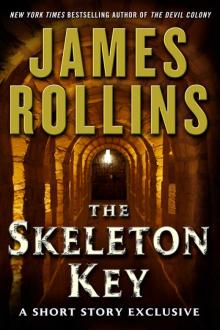 The Skeleton Key
The Skeleton Key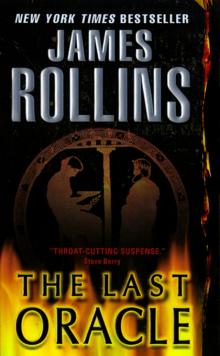 The Last Oracle
The Last Oracle The Judas Strain
The Judas Strain Black Order
Black Order Sandstorm
Sandstorm Ghost Ship
Ghost Ship The Devil Colony
The Devil Colony Subterranean
Subterranean The Doomsday Key
The Doomsday Key The 6th Extinction
The 6th Extinction Bloodline
Bloodline Jake Ransom and the Howling Sphinx
Jake Ransom and the Howling Sphinx The Midnight Watch
The Midnight Watch Map of Bones
Map of Bones The Demon Crown
The Demon Crown Deep Fathom
Deep Fathom Sigma Guide
Sigma Guide Kowalski's in Love
Kowalski's in Love Jake Ransom and the Skull King's Shadow
Jake Ransom and the Skull King's Shadow Excavation
Excavation The Seventh Plague
The Seventh Plague Altar of Eden
Altar of Eden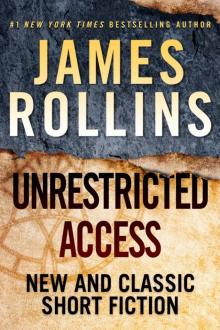 Unrestricted Access: New and Classic Short Fiction
Unrestricted Access: New and Classic Short Fiction Indiana Jones and the Kingdom of the Crystal Skull
Indiana Jones and the Kingdom of the Crystal Skull Crucible
Crucible The Eye of God
The Eye of God The Bone Labyrinth
The Bone Labyrinth The Last Odyssey: A Thriller
The Last Odyssey: A Thriller Unrestricted Access
Unrestricted Access Amazonia
Amazonia Blood Brothers: A Short Story Exclusive
Blood Brothers: A Short Story Exclusive Map of Bones: A Sigma Force Novel
Map of Bones: A Sigma Force Novel The Skeleton Key (sigma force)
The Skeleton Key (sigma force)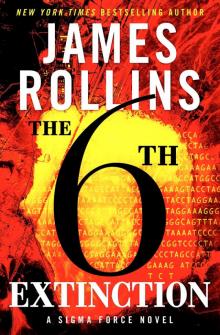 Sigma Force 10 - The Sixth Extinction
Sigma Force 10 - The Sixth Extinction Innocent Blood
Innocent Blood Map of Bones sf-2
Map of Bones sf-2 The Eye of God: A Sigma Force Novel
The Eye of God: A Sigma Force Novel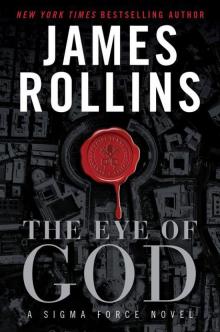 The Eye of God: A Sigma Force Novel sf-9
The Eye of God: A Sigma Force Novel sf-9 The Pit
The Pit Indiana Jones and the The Kingdom Of The Crystal Skull
Indiana Jones and the The Kingdom Of The Crystal Skull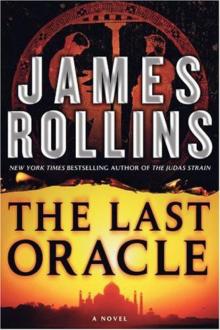 The Last Oracle (2008) sf-5
The Last Oracle (2008) sf-5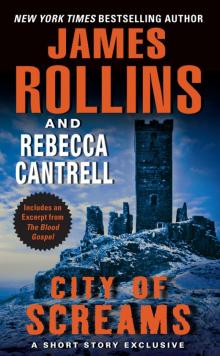 City of Screams
City of Screams The Doomsday Key and The Last Oracle with Bonus Excerpts
The Doomsday Key and The Last Oracle with Bonus Excerpts The Judas Strain sf-4
The Judas Strain sf-4 Blood Infernal
Blood Infernal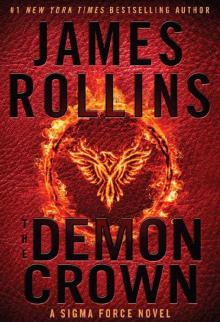 The Demon Crown: A Sigma Force Novel
The Demon Crown: A Sigma Force Novel War Hawk: A Tucker Wayne Novel
War Hawk: A Tucker Wayne Novel SANDSTORM sf-1
SANDSTORM sf-1 Bloodline: A Sigma Force Novel
Bloodline: A Sigma Force Novel Amazonia: a novel
Amazonia: a novel The Last Oracle: A Sigma Force Novel
The Last Oracle: A Sigma Force Novel City of Screams (the order of the sanguines)
City of Screams (the order of the sanguines)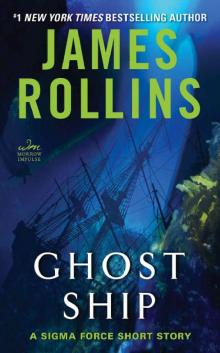 Ghost Ship: A Sigma Force Short Story
Ghost Ship: A Sigma Force Short Story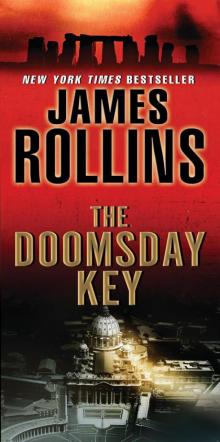 The Doomsday Key: A Sigma Force Novel
The Doomsday Key: A Sigma Force Novel